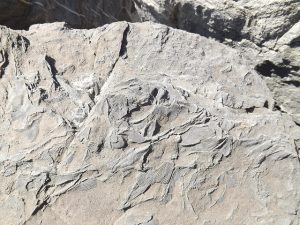 This is a guest post by Nicole Lewis, a freelance writer and professional blogger. Nicole is interested in academic research and writing.
This is a guest post by Nicole Lewis, a freelance writer and professional blogger. Nicole is interested in academic research and writing.
Rituals in Prehistoric Britain
People have always wondered how their ancestors lived. With each passing day, new archeological findings paint a picture of ancient practices cutting across Paleolithic, Mesolithic, Neolithic, Bronze Age, Iron Age, and Pre-Roman times. Each of these was marked with significant developments in the everyday life of the early man ranging from the tools they used to the foods they ate, and from their clothing to housing. This fascination is reflected in both our education systems and in the interest archeologists pay to fossils and historical clues.
However, while most of what has been documented dates back to late Roman Age, historians have been digging deeper to unearth more information on ritualistic practices that took place in the preceding ages.
This post is a historical walkthrough, tracing prehistoric practices in Britain and the rituals that archeologists and historians have been able to put together. In particular, we’ll take a look at the key ritualistic developments that marked man’s ancestry.
Religious and Burial Rituals
Human Sacrifices
 The Paleolithic Age was marked by paganism, during which the early man partook in worshiping animals. A relevant Typemyessays.com post uses the word totemism to describe this period. Animal paintings and engravings on rocks and walls point to a close relationship between early man and animals.
The Paleolithic Age was marked by paganism, during which the early man partook in worshiping animals. A relevant Typemyessays.com post uses the word totemism to describe this period. Animal paintings and engravings on rocks and walls point to a close relationship between early man and animals.
Burial practices in this age shed light on a religious system in which the early man used burial goods to send off the dead, and protected the graves furiously in the hope of life after death. Stone tools and animal body parts discovered alongside human skeletons in early graves indicate that these practices were passed down from generation to generation. A recent analysis of human skulls discovered in different Megalithic graves paints a picture of advanced burial rituals in the middle and upper Paleolithic ages.
Communal tombs, still visible in places like Uley Long Barrow, Gloucestershire, West Kennet Long Barrow, and Wiltshire, illustrate a macabre finding: the existence of remains exhibiting signs of violent death and arranged in specific ways. These suggest that human sacrifices may have taken place. Archeologists are still debating whether the bodies were moved to the burial sites or if they died there–suggesting a sacrifice.
While historians have not been able to discern the true meaning of unique arrangement of bones dating back to Upper Paleolithic Age, the phenomena point to a belief in a magical system. Later discoveries referring to the Iron Age, where skeletons of dogs and oxen were found in large numbers in swamps, reinforce a belief that the early man in Britain must have practiced human and animal sacrifices in reverence to a deity.
Cannibalism
Following the discovery of human bones at Gough’s Cave and Somerset Cave in the 1980s, analysis by archeologists suggest a possibility of cannibalistic rituals that might have been part of early man’s life in Paleolithic Era. Incision patterns on bones suggest that the Prehistoric times were marked by gory rituals. Such practices seem to have continued in the Neolithic Age, as indicated by incised human skulls and deep cuttings into bone marrows.
Druidism
Even though it took the advent of Christianity to stomp out human and animal sacrifices, druids may have paved the way for this. These ‘Oak-knowers’ are rarely talked about until the Iron Age. Even so, their influence in passing down philosophical knowledge and administration of new religious practices feature in archeological findings. Fossils of valuable items such as weapons and precious metals like gold in rivers and springs point to what archeologists believe was a shift in early man’s traditions. They argue that the early man was now sacrificing objects, instead of lives, to deities such as water gods. Fertility statuettes, also called Venus statuettes, also become more frequent during this age, suggesting rituals of a gentler nature.
Perhaps, then, druids helped phase out human and animal sacrifices with the passage of time, as humanity transcended into the Iron Age.





Fascinating. The origins of ritual and worship is so interesting and I don’t we’ll ever truly know. Great post, Nicole. Thanks for sharing, Nicholas. 🙂
Thank you so much, D 🙂
Really interesting stuff! So we were on the menu, huh? Probably taste like chicken…
Lol-so they say 😀
Not nice to think of my ancestors munching each other. 🙂
Thanks to you and Nicole for the valuable research, Nicholas.
Best wishes, Pete.
Lol-if it’s any consolation, I doubt mine were any better 😀